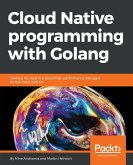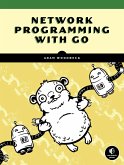Gain a deep understanding of concurrency and learn how to leverage concurrent algorithms to build high-throughput data processing applications, network servers and clients that scale. Key Features:Learn about the Go concurrency primitives, Go memory model, and common concurrency patterns Develop the insights on how to model solutions to real-life problems using concurrency Explore practical techniques to analyze how concurrent programs behave Book Description: The Go language has been gaining momentum due to its treatment of concurrency as a core language feature, making concurrent programming more accessible than ever. However, concurrency is still an inherently difficult skill to master, since it requires the development of the right mindset to decompose problems into concurrent components correctly. This book will guide you in deepening your understanding of concurrency and show you how to make the most of its advantages. You'll start by learning what guarantees are offered by the language when running concurrent programs. Through multiple examples, you will see how to use this information to develop concurrent algorithms that run without data races and complete successfully. You'll also find out all you need to know about multiple common concurrency patterns, such as worker pools, asynchronous pipelines, fan-in/fan-out, scheduling periodic or future tasks, and error and panic handling in goroutines. The central theme of this book is to give you, the developer, an understanding of why concurrent programs behave the way they do, and how they can be used to build correct programs that work the same way in all platforms. By the time you finish the final chapter, you'll be able to develop, analyze, and troubleshoot concurrent algorithms written in Go. What You Will Learn:Understand basic concurrency concepts and problems Learn about Go concurrency primitives and how they work Learn about the Go memory model and why it is important Understand how to use common concurrency patterns See how you can deal with errors in a concurrent program Discover useful techniques for troubleshooting Who this book is for: If you are a developer with basic knowledge of Go and are looking to gain expertise in highly concurrent backend application development, then this book is for you. Intermediate Go developers who want to make their backend systems more robust and scalable will also find plenty of useful information. Prior exposure Go is a prerequisite.
Hinweis: Dieser Artikel kann nur an eine deutsche Lieferadresse ausgeliefert werden.
Hinweis: Dieser Artikel kann nur an eine deutsche Lieferadresse ausgeliefert werden.








